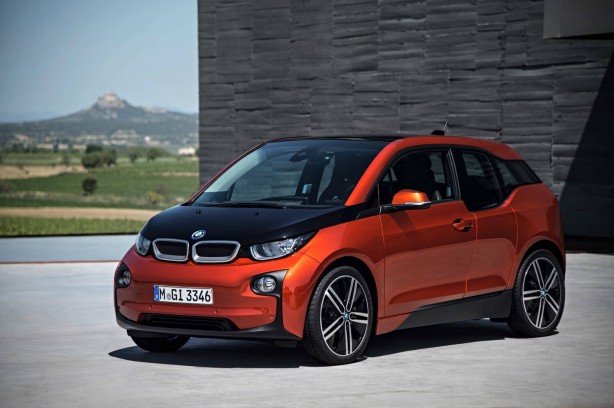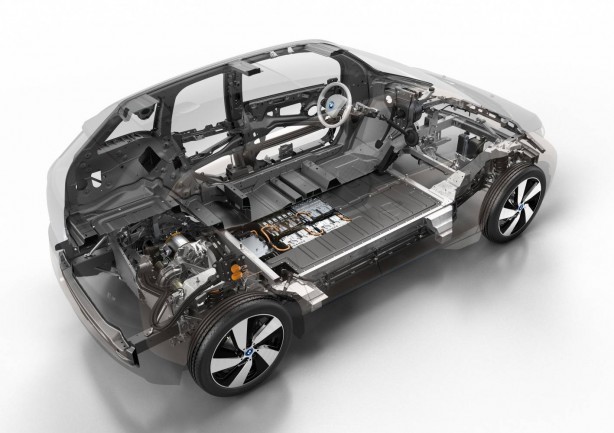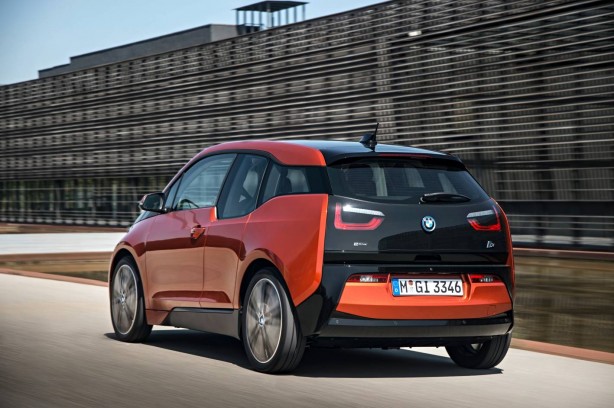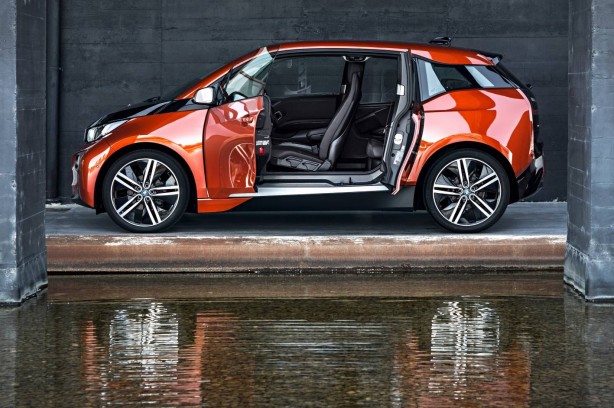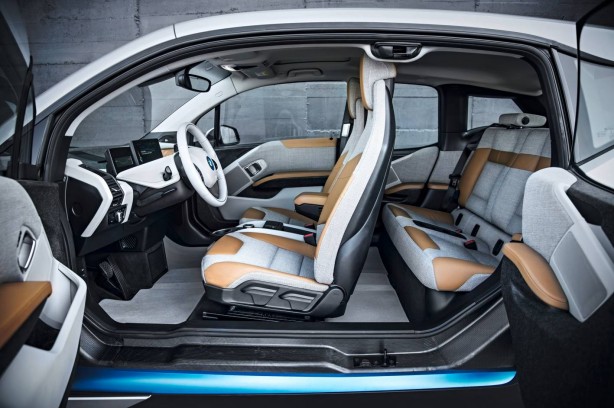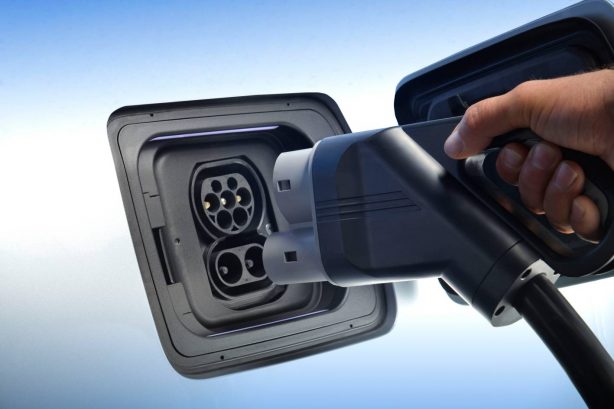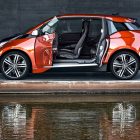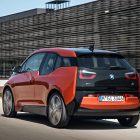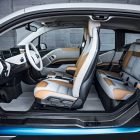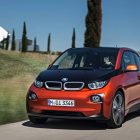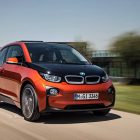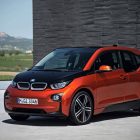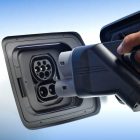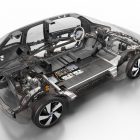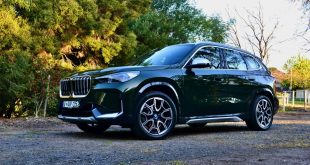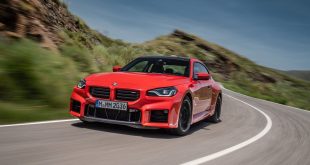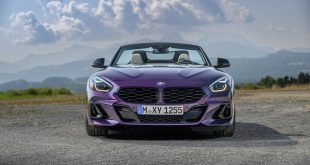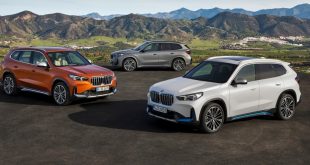BMW has launched its first electric vehicle and the company’s sub-brand, the BMW i3 and BMW i, respectively. The i3 – the first series-produced model by BMW i – is touted by the company as the zero-emission vehicle in a premium car package with ‘pure driving pleasure’.
Powered by an electric motor that generates a maximum output of 125kW (170hp) and peak torque of 250Nm, directed to the rear wheels via a single-speed transmission. 0-100km/h is accomplished in 7.2 seconds. The i3 has a range of between 130 – 160km in everyday condition from a full charge. This rises by around 20 kilometres in ECO PRO mode and by the same distance again in ECO PRO+ mode. The BMW i3 can also be optioned with a 25kW (34hp) 650cc two-cylinder range-extender engine which maintains the charge of the lithium-ion battery at a constant level while on the move as soon as it dips below a specified level.
The BMW i3 gets its power from a lithium-ion batteries integrated into the car’s underfloor section. This not only significantly lowers the centre gravity of the car, but provide an even 50:50 weight distribution that contributes to the car’s handling. Additionally, the electric motor mounted in close proximity to the driven rear axle offers unique performance characteristics for this type of drive system as well as providing unbeatable traction.
The standard 19-inch forged light-alloy wheels of the BMW i3 are ultra-lightweight yet also boast outstanding torsional stiffness. The wheels are fitted with low rolling resistance tyres in 155/70 R19 format, their bespoke, relatively narrow dimensions providing an ideal combination of lower drag and a contact area designed for dynamic cornering. Customers can order 20-inch light-alloy wheels as an option.
So, what is the BMW i?
The BMW i brand is created by the BMW Group in its drive to achieve the necessary balance between individual needs and the global mobility requirements of the future. BMW i is committed to creating innovative vehicles and mobility services with a premium character that is defined squarely in terms of sustainability. This vision is about to become reality: the BMW i3, the first series-produced model from the new brand, offers customers emission-free mobility in a premium car package.
The BMW i3 is the world’s first premium car designed from the ground up to be powered by an electric drive system, and promises engaging driving pleasure, a hallmark of BMW. Like the i3’s unique vehicle architecture – based around the LifeDrive structure, with its CFRP passenger cell and aluminium module encompassing the powertrain, battery and chassis – the electric motor, power electronics and high-voltage lithium-ion battery have been developed independently by the BMW Group under its BMW eDrive programme.
The use of lightweight, durable and crash-safe CFRP on this scale is unique in volume car production. And thanks to its weight-reducing properties, the BMW i3 is no heavier than a comparable vehicle with a conventional drive system and full fuel tank. Its DIN kerb weight stands at 1,195 kilograms – including a high-voltage battery that allows the driver to enjoy both sporting performance attributes and an operating range sufficient for everyday use.
The LifeDrive architecture and BMW eDrive drive technology allow an exceptional degree of freedom in terms of design. The BMW i3 measures 3,999 millimetres in length, 1,775 mm wide and 1,578 mm in height. Its short overhangs, large glass surfaces imbue the i3 with lightness. Together with visible carbon structures, it provides a window to the car’s low weight design.
The use of the light yet extremely rigid material CFRP in the construction of the passenger compartment allows it to dispense with B-pillars, making access to the two rows of seats extremely easy. One of the signature features of BMW i models is their “black belt”, which extends from the bonnet over the roof and into the rear of the car. Another product of the stand-alone BMW i design language is the “stream flow” sweep of the side contours, which allows larger side window surfaces at the rear and thereby magnifies the generous feeling of space inside the car.
The front-end design of the BMW i3 is defined by a powerfully contoured apron, by the distinctive interpretation of the BMW kidney grille as an enclosed element, and by headlights bordered with U-shaped LED light units. The likewise U-shaped LED rear lights are integrated as “floating” elements into the large, fully glazed tailgate.
Opposing “coach” doors, coupled with the absence of B-pillars and the centre tunnel normally found in conventional vehicles, form the basis for the unusually high degree of spaciousness and freedom of movement inside the BMW i3.
Inside, a mixture of naturally treated leather, wood, wool and other renewable and recycled raw materials ensures that premium character of the BMW i3. The gear selector and start/stop switch share a control element projecting from the steering column. Both the instrument cluster and the iDrive operating system’s Control Display (6.5 inch or 8.8 inch) come in free-standing display form.
The BMW i3 can be ordered with a choice of two non-metallic and four metallic colours exterior paintwork. The interior can be tailored to the customer’s personal style with the Loft, Lodge and Suite equipment lines available as alternatives to the standard Atelier trim. Standard equipment for the BMW i3 includes the iDrive system and Radio Professional, telephone hands-free facility, air conditioning, Park Distance Control with rear-mounted sensors, stationary climate control and a variable luggage compartment. Also standard are onboard connectivity via an integrated SIM card and extensive Smartphone integration via USB and Bluetooth, including the BMW i Remote App. Additional options include a choice of navigation systems, Adaptive LED Headlights, an electrically operated glass roof, automatic climate control, heated seats, Comfort Access and a host of BMW ConnectedDrive features.
Also available as options are a range extender and driver assistance systems such as Driving Assistant Plus, Parking Assistant, a rear view camera and Speed Limit Info.
In terms of drive system and driving dynamics, the single-pedal control concept in the BMW i3 – configured by the BMW Group’s drive system development engineers – also contributes to the engaging driving experience. Recuperation mode is activated the moment the driver takes his foot off the accelerator. The electric motor switches from drive to generator mode, feeding power into the lithium-ion battery. At the same time, it generates a precisely controllable braking effect. This recuperation is speed-sensitive, which means the car “coasts” with maximum efficiency at high speeds and generates a strong braking effect at low speeds.
The BMW i3 is the world’s first fully networked electrically powered car. A SIM card, fitted as standard in the BMW i3, is the key that unlocks the BMW ConnectedDrive services – in their recalibrated 2013 guise – available to the new electric model. For example, it introduces navigation services specially developed to enhance electric mobility alongside familiar features including the Concierge Services information facility and the Intelligent Emergency Call function. Moreover, drivers can use the BMW i Remote app to share information with their car at any time using their smartphone. The pedestrian navigation function guides the driver from parking place to final destination and back, while BMW ConnectedDrive also offers unique intermodal route guidance as a world first, which incorporates local public transport connections into journey planning. The aim of this intelligent networking is to enable maximum driving pleasure in a car emitting zero local emissions.
The Driving Assistant Plus option comprises Collision Warning with braking function (which responds to both moving and stationary vehicles ahead as well as to pedestrians) and Active Cruise Control with Stop & Go function. In addition to giving visual and audible warnings, the system is also able to brake the vehicle automatically if required, with up to maximum stopping power.
The Parking Assistant – a further option – performs steering manoeuvres at the same time as controlling the accelerator, brake and gear selection, enabling fully automatic parking of the BMW i3 in a space parallel to the road. To supplement the standard Park Distance Control (PDC) with rear-mounted sensors, a rear view camera is also available for the BMW i3. Further driver assistance systems are the Traffic Jam Assistant and Speed Limit Info.
In selected markets, sales of BMW i products and services will be handled via an innovative multi-channel sales model. In addition to dealerships, this model will also comprise a mobile sales team, a Customer Interaction Centre (CIC) and Internet sales. All the new platforms are fully interlinked. Whichever sales channel a customer chooses, and regardless of whether they buy or lease the vehicle, their contract is always with BMW AG and not with the dealer, as would normally be the case. At launch, it is expected that more than 10 per cent of European BMW dealers will also be handling sales of BMW i models.
 ForceGT.com Car News, Car Reviews, Video Reviews, Tuning and much more.
ForceGT.com Car News, Car Reviews, Video Reviews, Tuning and much more. 